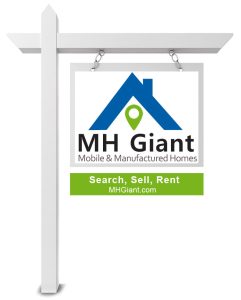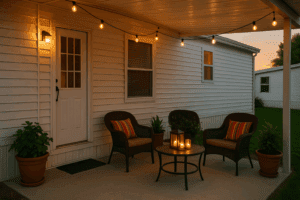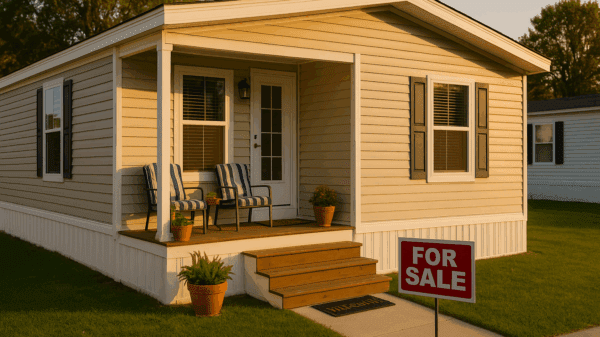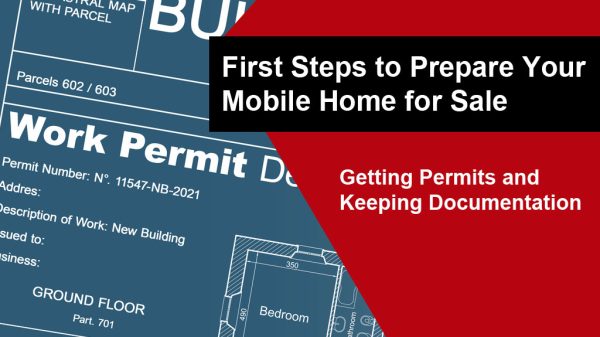Staging, Marketing, and Paperwork Tips – How to Sell Your Mobile Home Quickly
Table of Contents
Introduction: Why Selling Smart Matters
Selling a mobile home can move faster than selling a traditional house—but only if you approach it strategically. A smart sale means two things: speed and profit. Whether you’re upgrading to a new manufactured home, relocating for work, or simply downsizing, the goal is to find a serious buyer quickly without leaving money on the table.
Unlike conventional real estate, mobile homes have their own unique market dynamics. Location—whether your home sits on rented land in a community or on private property—affects pricing, paperwork, and marketing. Buyers are often looking for affordability and flexibility, which can work in your favor if you position your home correctly.
This guide breaks the process into clear steps:
-
Understanding your local market so you price accurately.

-
Staging and preparing your home to impress buyers from the first glance.
-
Marketing strategies that put your listing in front of the right audience.
-
Paperwork and legal requirements to ensure a smooth, stress-free closing.
By following these steps—and tapping into resources like MHGiant.com for targeted mobile-home listings—you’ll be set up to sell efficiently and at the best possible price and you will know how to sell your mobile home quickly.
Step 1: Understand the Market
Before you stage or advertise, learn exactly what the market is doing in your area. Mobile homes are influenced by:
1. Local Demand and Seasonality
-
Regional trends: Check sales in your city, county, or state. High-demand regions may allow you to list slightly higher and still sell quickly.
-
Seasonal swings: Spring and early summer are prime selling seasons because families want to settle before the next school year.
2. Compare Similar Homes
Look at comparable mobile homes (“comps”) within your park or nearby. Note:
-
Year and model of the home
-
Size (single-wide vs. double-wide)
-
Upgrades (new roof, energy-efficient windows, updated kitchen)
-
Lot type—rented, leased, or owned
Resources like MHGiant.com let you filter by year, size, and location, so you can set a realistic price range.
3. Factor in Community Rules
If your home is in a mobile-home park, the park owner or management company may need to approve the buyer or the sale itself. Ask about:
-
Application requirements for new owners
-
Lot lease transfer policies
-
Any fees (such as background checks or administrative charges)
Knowing these details upfront helps you avoid surprises and ensures prospective buyers are ready to meet community standards and how to sell your mobile home quickly
4. Evaluate Current Financing Options
Mobile homes often qualify for chattel loans or personal property financing rather than traditional mortgages. Buyers who understand their financing choices are more likely to move quickly. Provide them with links or brochures for local lenders familiar with manufactured housing.
Quick Market Checklist
-
Review 3–5 active listings similar to your home.
-
Call your park manager or county office about sales requirements.
-
Track average days on market to gauge urgency.
Understanding these market forces gives you confidence when it’s time to set a price and negotiate.
Step 2: Prep & Stage Your Home
A clean, welcoming home creates an instant emotional connection. Staging isn’t just for traditional houses—buyers of manufactured homes want to imagine themselves living comfortably in the space. How to sell your mobile home quickly.
1. Declutter and Deep-Clean
-
Remove personal photos and excess furniture to make rooms feel larger.
-
Wash windows inside and out to maximize natural light.
-
Power-wash siding and steps to give the exterior a crisp look.
2. Tackle Minor Repairs
-
Fix squeaky doors, leaky faucets, and chipped paint.
-
Check skirting and underpinning for damage.
-
Replace burnt-out light bulbs with warm LED lighting.
3. Freshen Up with Low-Cost Upgrades
-
A new coat of neutral paint can transform walls.
-
Replace dated cabinet hardware for an instant kitchen refresh.
-
Add inexpensive landscaping: potted plants or mulch for curb appeal.
4. Stage Each Key Area
-
Living room: Arrange seating for conversation and flow.
-
Kitchen: Clear counters except for a single decorative bowl or plant.
-
Bedrooms: Use light-colored bedding and simple décor.
-
Bathroom: Spotless surfaces, fluffy towels, and a scented candle.
5. Create an Inviting Exterior
Your front entrance is the first impression. Add a welcome mat, clean railings, and, if possible, repaint the front door.
Safety & Compliance
Ensure that smoke detectors, carbon monoxide alarms, and all utilities meet local codes. Buyers (and lenders) will notice these details.
Step 3: Pricing Strategies That Attract Buyers
Setting the right price is one of the most important decisions you’ll make. Price too high, and your home lingers on the market. Price too low, and you leave profit behind.
Follow these proven strategies to hit the sweet spot.
1. Start With a Solid Market Analysis
-
Compare recently sold homes of similar size, age, and condition. Look at the final sale prices, not just the list prices.
-
Factor in land status. Homes on privately owned land can command a premium compared to homes in leased-lot communities.
-
Review current competition. If several comparable units are for sale in the same park, you may need to stay competitive or highlight unique features.
2. Adjust for Upgrades and Condition
Upgrades like a new roof, energy-efficient windows, or updated appliances can add measurable value. Conversely, aging HVAC systems or dated flooring may warrant a lower asking price.
Create a list of all recent improvements and their costs—buyers (and their lenders) appreciate transparency.
3. Consider Seasonal Timing
Spring and early summer remain the strongest seasons for mobile-home sales, but motivated buyers shop year-round. If you must list in winter, consider a slightly more aggressive price to attract attention.

4. Use a Pricing Band, Not a Single Number
Instead of deciding on one exact figure, think in terms of a range.
For example, “$74,000–$78,000” gives you room to negotiate while signaling flexibility.
5. Offer Buyer Incentives
-
Cover one month of lot rent after closing.
-
Include a home warranty for appliances and systems.
These incentives can tip the scales in your favor without drastically reducing the asking price.
6. Leverage Professional Appraisals
If you’re unsure, consider a licensed manufactured-home appraisal.
It provides a defensible starting point and reassures buyers—and their lenders—that the price is fair.
Pricing Checklist
- Review at least 5 comparable recent sales.
- List upgrades and their approximate values.
- Decide on a price range and bottom-line number.
- Prepare a brief sheet explaining your pricing logic to interested buyers.
Step 4: Marketing Your Mobile Home
Even the best-priced home needs strong marketing to reach qualified buyers quickly.
Your goal: maximum visibility with the right audience.
1. Professional-Quality Photos
-
Natural light is key. Shoot during the day with curtains open.
-
Capture every room from multiple angles, plus exterior shots.
-
Highlight upgrades—new flooring, modern kitchen appliances, updated bathroom fixtures.
If possible, hire a real-estate photographer. The cost is modest compared to the value of faster offers.
2. Compelling Online Listings
Create a detailed, engaging description:
-
Start with the headline: “3-Bedroom Double-Wide with New Roof and Deck.”
-
Use bullet points for key features (square footage, recent updates, community amenities).
-
Emphasize unique selling points such as “energy-efficient windows” or “large corner lot.”
Where to List
- MHGiant.com: A top marketplace focused specifically on manufactured and mobile homes. Buyers here are already searching for exactly what you’re offering.
-
Major real-estate sites like Zillow or Realtor.com (select the manufactured-home category).
-
Community bulletin boards or local Facebook Marketplace groups for extra reach.
3. Signage and Curb Appeal
- A simple, weather-proof “For Sale” sign with your contact info is essential.
- Keep the yard or lot neatly maintained so drive-by prospects are impressed.
4. Social Media & Local Outreach How To Sell Your Mobile Home Quickly
- Share your listing on local Facebook groups, neighborhood forums, and Instagram stories.
- Ask friends and family to share—it widens the circle exponentially.
- Some sellers create short walkthrough videos or virtual tours to post on YouTube or TikTok for extra engagement.
5. Hosting an Open House or Private Showings
- Choose weekends or early evenings when buyers are free.
- Keep refreshments simple—bottled water or light snacks.
- Provide printed flyers with key details and your contact information.
6. Partnering with a Mobile-Home Dealer or Realtor
- An experienced agent or dealer can expand your reach and handle negotiations, especially if you’re in a hurry.
- Look for professionals with specific manufactured-home expertise and positive reviews.
7. Keep Information Ready
- Serious buyers will ask about:
- Year, make, and model of the home
- Recent upgrades and maintenance records
- Community fees or lot rent details
- Utility averages (electric, water, propane, etc.)
- Having this information neatly organized demonstrates credibility and builds trust.
- A top marketplace focused specifically on manufactured and mobile homes. Buyers here are already searching for exactly what you’re offering.
Step 5: Negotiating Like a Pro
The negotiating table is where you protect your profit while keeping the sale moving.
Strong preparation—and a calm, professional attitude—are the keys to a quick, successful agreement.
1. Know Your Bottom Line
Before you receive the first offer, decide:
-
The lowest price you’ll accept.
-
Whether you’ll contribute to closing costs or lot rent.
-
How flexible you are on move-out dates.
Write these down. Sticking to your pre-set limits helps you avoid hasty decisions.
2. Encourage Multiple Offers
If possible, schedule showings close together and delay accepting an offer until you’ve received several. Competition naturally drives stronger bids.
3. Respond Quickly, but Don’t Rush
Reply within 24 hours to show seriousness, but avoid snap decisions.
Counteroffers should be clear and documented in writing.
4. Use Positive Language
Frame counters in terms of mutual benefit:
“I can accept your offer if we close within 30 days,”
rather than,
“That price is too low.”
5. Consider Non-Price Factors
A slightly lower price with a cash buyer and quick closing can be worth more than a higher price with financing contingencies.
6. Be Ready for Common Requests
Buyers may ask for:
-
Minor repairs
-
Appliance inclusion
-
Credits toward community fees
Evaluate each carefully—some small concessions can secure a faster, smoother sale.
7. Keep Emotions Out of It
Your home may hold memories, but negotiations are business.
Polite professionalism builds trust and keeps buyers engaged.
Quick Checklist
- Confirm bottom-line price and terms.
- Prepare counteroffer templates.
- Gather repair/upgrade records to justify your price.
Step 6: Navigating Paperwork and Permits
Once you and the buyer shake hands on price, the legal details begin.
Proper documentation protects both parties and ensures a clean transfer of ownership.
1. Title and Ownership Verification
-
Locate the original title or certificate of ownership.
-
If the title is lost, request a duplicate from your state’s Department of Motor Vehicles or housing authority.
-
Make sure all liens (loans or taxes) are cleared before closing.
2. Bill of Sale
This document records the sale price, VIN or serial number, buyer/seller details, and the date of transfer.
Many states provide a template—check your state’s housing or motor vehicle website.
3. Community or Park Approval
If your home is in a leased-lot community:
-
Notify management of your intent to sell.
-
Ensure the buyer meets park requirements (background checks, income verification, etc.).
-
Obtain any required park transfer paperwork.
4. Inspection and Compliance Certificates
Some states require a safety inspection (electrical, plumbing, or anchoring) before transfer.
If the home is older, a HUD data plate verification may also be necessary.
5. Taxes and Fees
-
Confirm any sales tax, transfer tax, or title fee owed at closing.
-
In some regions, sellers must provide a tax clearance certificate to prove no back taxes are due.
6. Loan Payoff and Release
If you financed the home, contact your lender for the exact payoff amount.
The lender will release the lien once the loan is satisfied.
7. Escrow or Closing Agent
Consider using a professional closing agent or escrow service.
They hold funds securely, distribute payments, and file documents with the appropriate agencies.
8. Final Walkthrough and Handover
Schedule a walkthrough with the buyer to confirm the home’s condition and that agreed repairs were made.
Exchange keys, appliance manuals, and any community gate codes.
9. Keep Copies of Everything
Retain digital and paper copies of:
-
Bill of sale
-
Title transfer confirmation
-
Park approval forms
-
Tax and lien releases
Step 7: Closing the Deal Smoothly
You’ve negotiated the price and signed the purchase agreement—now it’s time to make the transfer official. A smooth closing ensures you receive payment quickly and the buyer takes ownership without hiccups.
1. Confirm the Timeline
Set a clear date for final payment, title transfer, and move-out.
Create a checklist that includes:
-
Escrow/closing agent appointment (if using one)
-
Buyer’s proof of insurance (if required)
-
Community or park manager’s final approval
-
Utility shut-off/transfer dates
2. Final Walkthrough
A day or two before closing, walk through the home with the buyer:
-
Verify that all agreed-upon repairs are complete.
-
Demonstrate key systems—HVAC, water heater, appliances.
-
Provide manuals and warranty paperwork.
3. Handling Funds Securely
-
Certified or cashier’s check or a wire transfer through escrow is safest.
-
Avoid accepting large sums in cash; it’s harder to document and can cause tax complications.
-
Escrow agents or real-estate attorneys can hold funds until all paperwork is filed.
4. Utility Transfers
Schedule termination or transfer of:
-
Electricity, water, gas/propane
-
Internet or cable
-
Lot-rent account (if applicable)
Give the buyer account numbers or community contacts to simplify setup.
5. Final Paperwork
Double-check that:
-
The bill of sale is signed by both parties.
-
The title is signed and notarized where required.
-
Any HUD compliance labels or state-required inspection certificates are provided.
Keep scanned copies of every signed document for your records.
6. Moving-Day Tips
-
Remove all personal items and double-check storage sheds or under-home skirting.
-
Leave behind spare keys, remotes, and gate passes.
-
Take final meter readings or photos for your utility records.
7. Celebrate and Notify
Once funds clear, congratulate yourself—you successfully sold your mobile home!
Notify your insurance company and local tax office that you are no longer the owner.
Bonus Tips & Common Mistakes to Avoid
Selling quickly and profitably is easier when you sidestep these common pitfalls.
Mistakes to Avoid
-
Overpricing the Home – Leads to long days on market and eventual price cuts.
-
Skipping Minor Repairs – Buyers notice dripping faucets or squeaky doors; small issues can derail negotiations.
-
Poor Photos – Dark or cluttered pictures reduce buyer interest before they even schedule a showing.
-
Incomplete Paperwork – Missing titles or unpaid taxes can delay closing or kill the sale.
-
Ignoring Park Rules – Failing to get community approval can void your agreement.
Extra Profit-Boosting Ideas
-
Offer to include furniture or appliances buyers need.
-
Highlight energy-efficient upgrades to justify a higher price.
-
Provide a one-year home warranty for extra buyer confidence.
Time-Saver Hacks
-
Bundle paperwork in a labeled folder or digital drive.
-
Use e-sign services (where legally accepted) to speed up signatures.
-
Keep a “show-ready” tote for quick decluttering when showings are scheduled last minute.
Conclusion & Call to Action
Selling your mobile home doesn’t have to be stressful—or slow. By staging thoughtfully, pricing strategically, marketing aggressively, and mastering the paperwork, you can move from “For Sale” to “Sold” with confidence and keep more profit in your pocket. How to Sell Your Mobile Home Quickly
Whether you’re relocating, upgrading, or simply ready for a change, the key is preparation. From the first deep-clean to the final signature, every step you take builds trust with buyers and speeds the process.
When you’re ready to reach serious shoppers, list your home on MHGiant.com. As a marketplace built exclusively for manufactured and mobile homes, MHGiant connects you with motivated buyers who know exactly what they’re looking for. The result? Faster offers, smoother negotiations, and a sale you can celebrate.
Take the first step today—gather your photos, polish your description, and create your MHGiant listing.
Your next chapter begins the moment you Post Your Home.
✅ Recap of the Complete Guide
-
Understand Your Market
-
Prep & Stage for Maximum Appeal
-
Price Smartly
-
Market Widely (with MHGiant.com as a key platform)
-
Negotiate Like a Pro
-
Master the Paperwork
-
Close the Deal with Confidence
Follow these steps and you’ll not only sell your mobile home quickly—you’ll sell it profitably.










